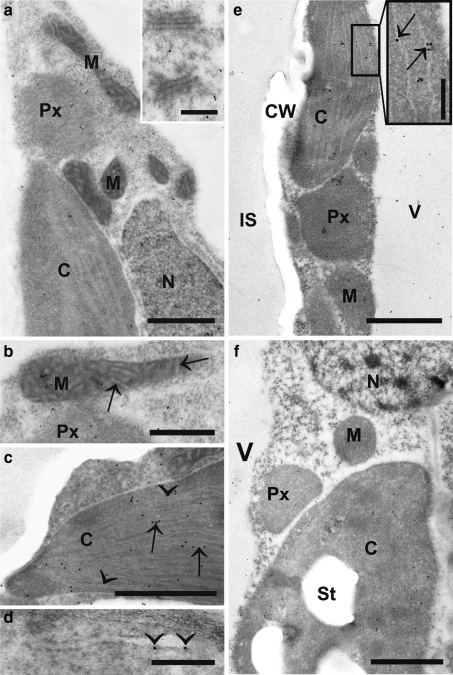Fig. 3.
Transmission electron micrographs showing the subcellular distribution of ascorbate in Arabidopsis thaliana Col-0 plants (a–e), exposed to light intensities of 150 μmol m−2 s−1 (a–d) or 700 μmol m−2 s−1 (e), and Nicotiana tabacum (f) plants. Gold particles bound to ascorbate could be found in different densities within chloroplast (C), mitochondria (M), nuclei (N), peroxisomes (Px), vacuoles (V) and the cytosol but not in cell walls (CW) and intercellular spaces (IS). Within mitochondria ascorbate was detected in the matrix but not in the lumen of cristae (arrows in b). Inside chloroplasts of control plants ascorbate was detected in the stroma and along the outside of the membranes of thylakoids (arrows) but not in starch grains (St) or the lumen of single and grana thylakoids (arrowheads in c). In cells exposed to high light conditions gold particles were also detected inside the lumen of thylakoids (arrows in inset of e). Ascorbate was also detected along the membranes (arrows in d) but not inside the lumen of the endoplasmic reticulum. Gold particles bound to ascorbate were not associated with dictyosomes (inset in a). Bars 1 μm (a, e and f), 0.5 μm (b and c), 0.2 μm (inset of a, d and e)

